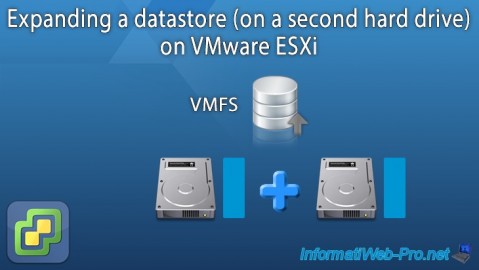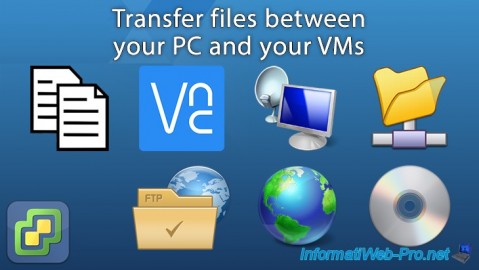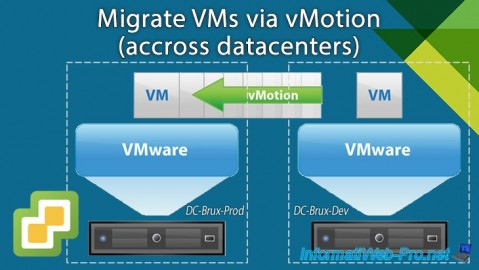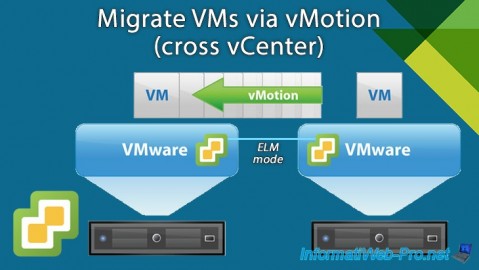Create a vApp (set of VMs that have dependencies) on VMware vSphere 6.7
- VMware
- VMware vCenter Server (VCSA), VMware vSphere
- 13 December 2024 at 08:45 UTC
-

- 3/3
4. Start a vApp
To start a vApp, right-click it or click "Actions", then click: Power -> Power On.

As you can see in recent tasks, 2 tasks have appeared:
- Power on virtual machine: starts the virtual machine specified as the target.
In other words, our "WS 2016 - AD" virtual machine from group 1 (in the order of startup of our vApp). - Launch vApp: corresponds to starting the entire vApp (indicated as target).
In our case, starting the vApp "RDS-vApp".
If you look in the left column, you will also see that a green triangle has appeared on the icon of the virtual machine concerned (in our case: WS 2016 - AD).

If you display the page of the 1st virtual machine (that of group 1), you will see that it is starting.

As you can see, our 1st virtual machine (WS 2016 - AD) has had time to fully boot and our 2nd virtual machine is still off (power off).

Once the start time of the 1st virtual machine (the one in group 1) has expired, your VMware vCenter Server will continue the startup of your vApp by starting the virtual machines in group 2.
In this case, in our case, our "WS 2016 - RDS" virtual machine.
If you look in the recent tasks, you will see that a new task "Power on the virtual machine" has been executed for this 2nd virtual machine (WS 2016 - RDS).
You will also see in the left column that a green triangle has appeared on the icon of this virtual machine. Which indicates that it has started.

Since all virtual machines in our vApp have been started, the "Launch vApp" task is now complete.

If you select this 2nd virtual machine, you will see that this one finally started correctly too.

5. Stop a vApp
At the moment our vApp is started and VMware vCenter Server shows the vApp status is: Running.

To stop your vApp, right-click on it or click "Actions", then click: Power -> Shut Down.

Confirm the shutdown of the selected vApp by clicking Yes.

As you can see, VMware vCenter Server will perform 2 tasks:
- Power off the virtual machine: corresponds to stopping the last virtual machine that was started according to the startup order of your vApp.
In this case, in our case, our virtual machine "WS 2016 - RDS" which is part of group 2 in this vApp startup order. - Stop vApp: corresponds to stopping the entire vApp.

After the previously specified shutdown delay for this 2nd virtual machine (WS 2016 - RDS), VMware vCenter Server will move on to the next virtual machine to be shut down.
In this case, our virtual machine "WS 2016 - AD" which is part of group 1 in the startup order of our vApp.
A new task "Turn off the virtual machine" will therefore appear for this virtual machine.

Once the shutdown of this virtual machine is complete, this "Power off virtual machine" task will be completed.
Since all virtual machines that are part of our vApp have been shut down, the "Stop vApp" task is now complete.

Share this tutorial
To see also
-

VMware 8/5/2022
VMware ESXi 7.0 / 6.7 - Extend a datastore (on a second hard drive)
-

VMware 7/1/2022
VMware ESXi 7.0 / 6.7 - Transfer files between your PC and your VMs
-

VMware 11/27/2024
VMware vSphere 6.7 - Migrate VMs via vMotion (accross datacenters)
-

VMware 11/29/2024
VMware vSphere 6.7 - Migrate VMs via vMotion (cross vCenter)

No comment